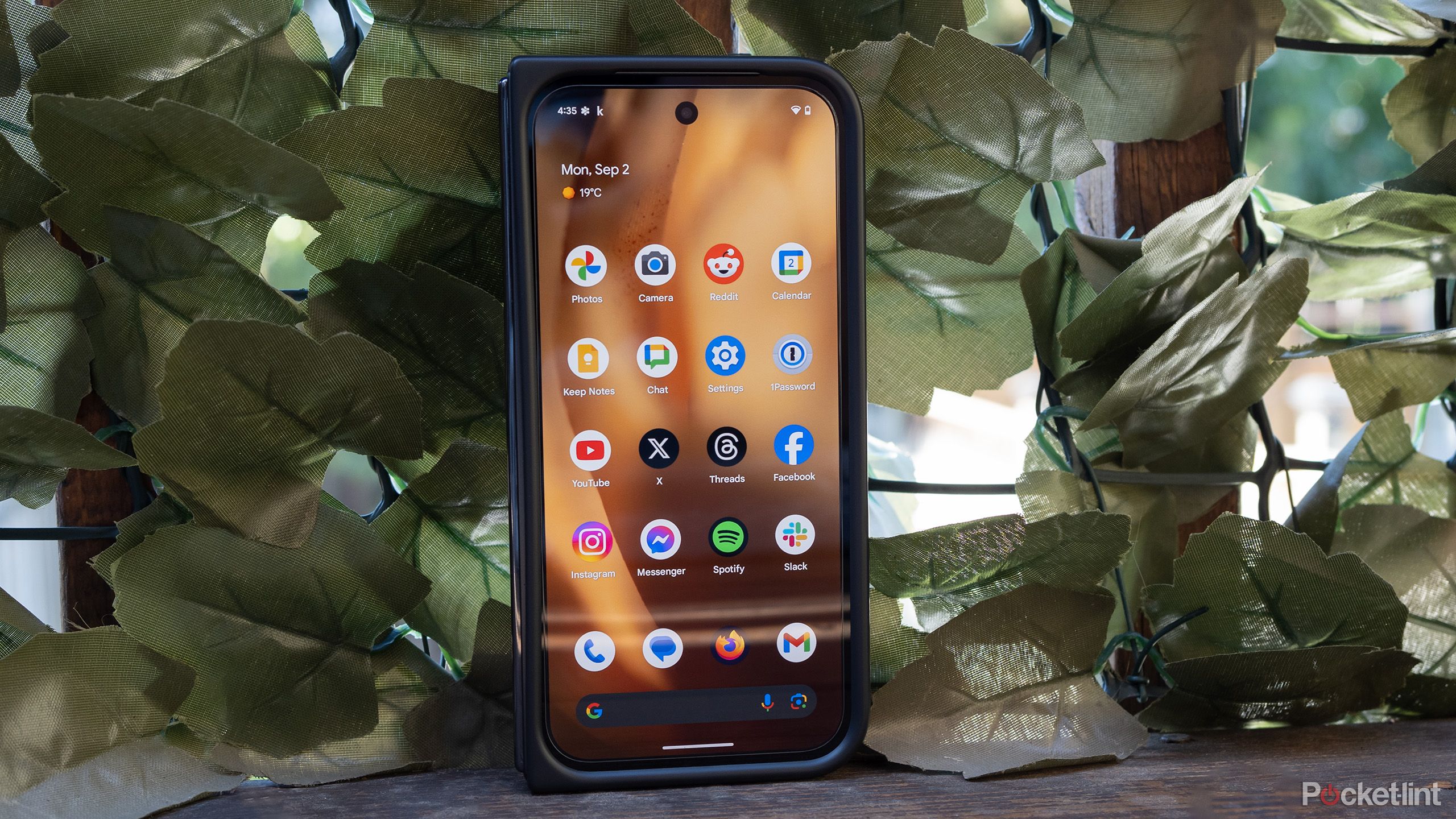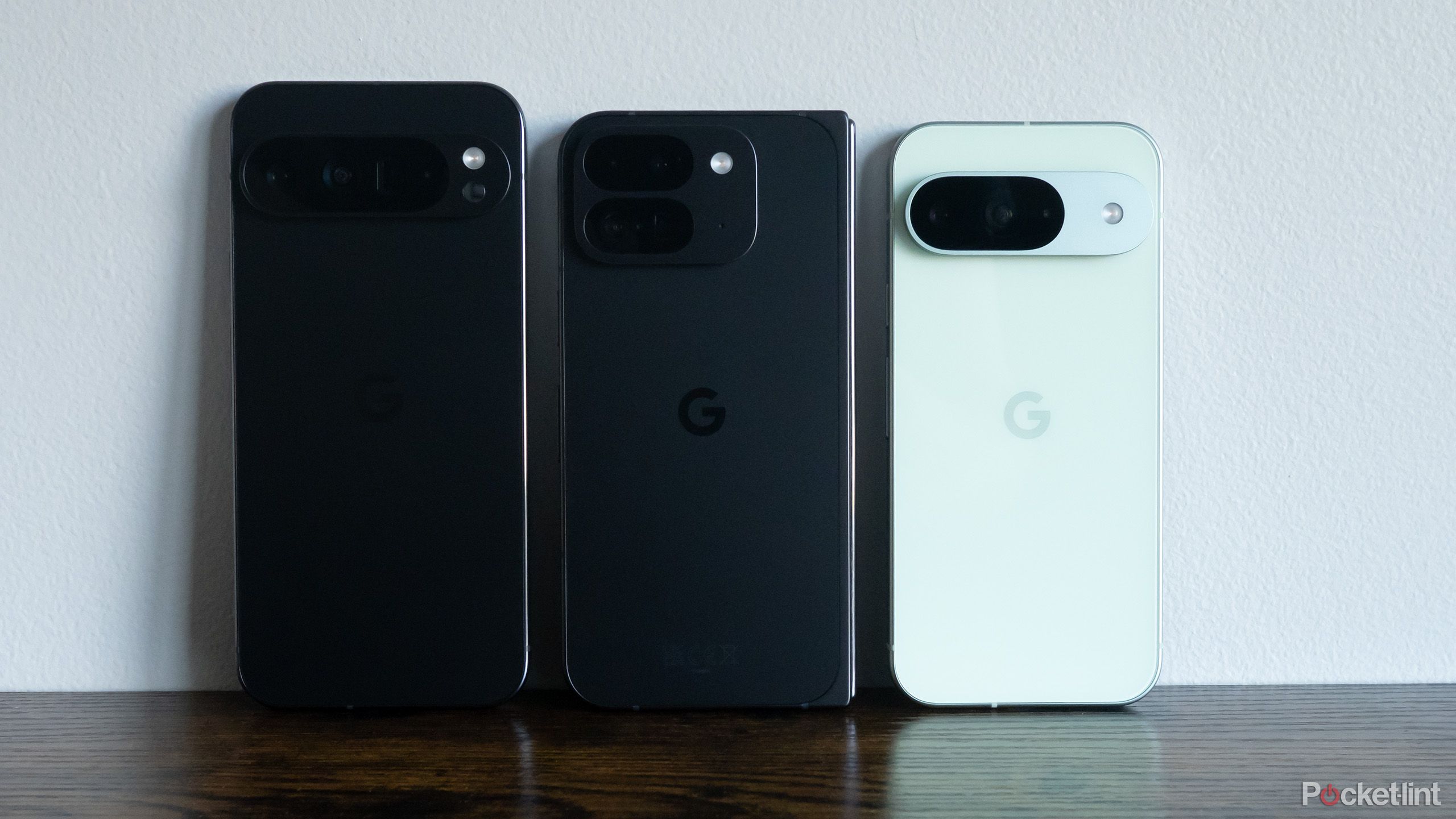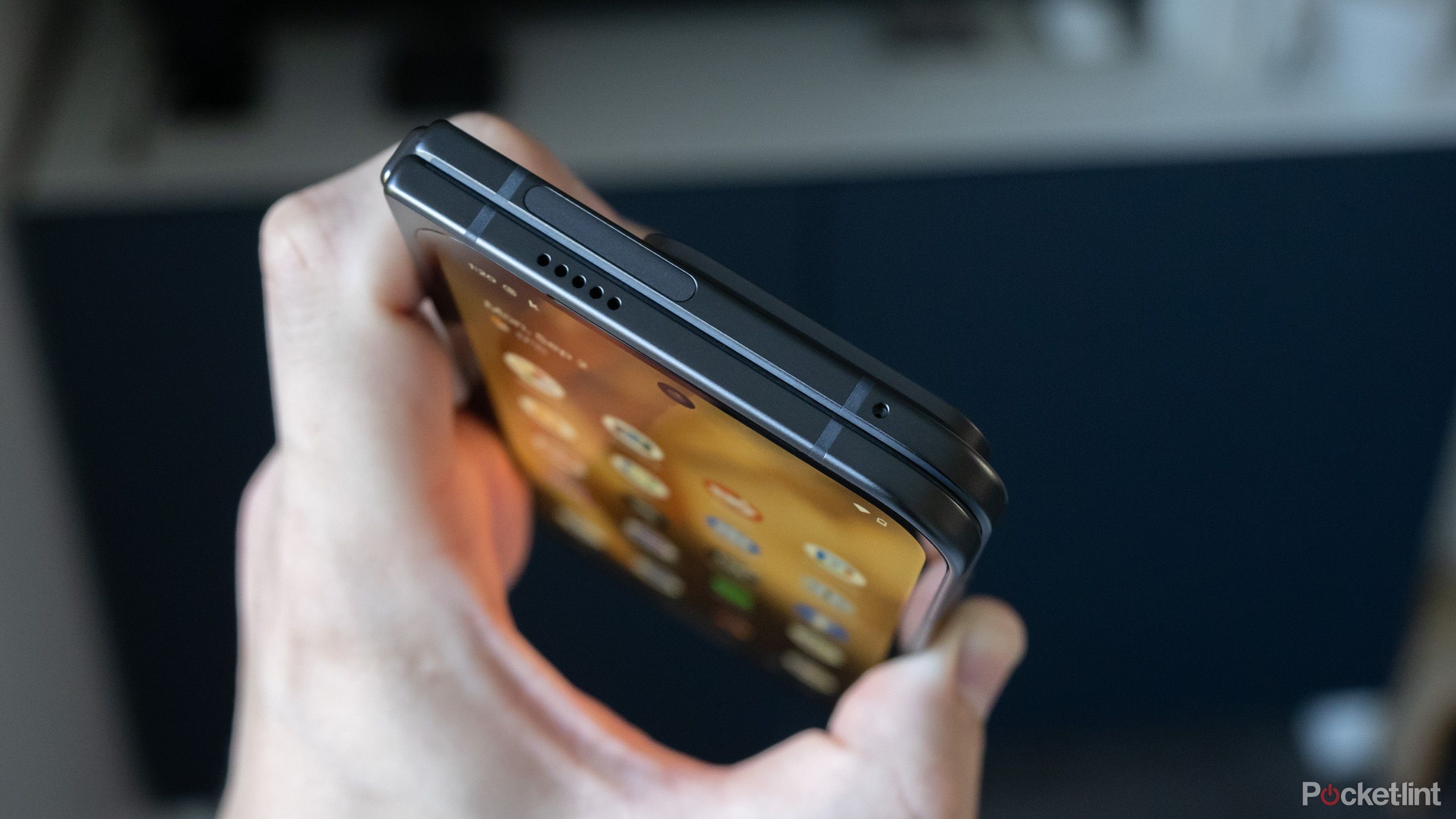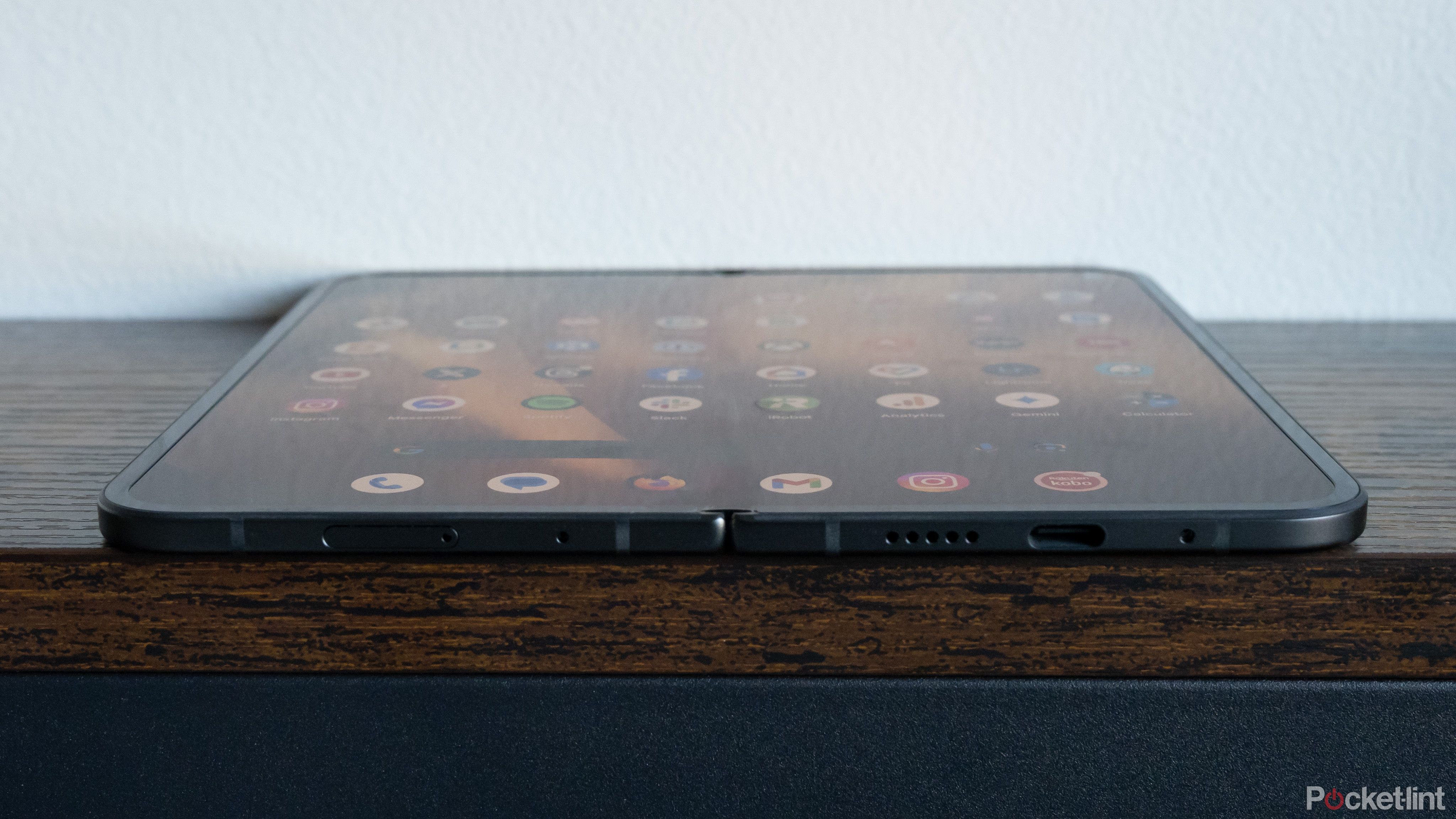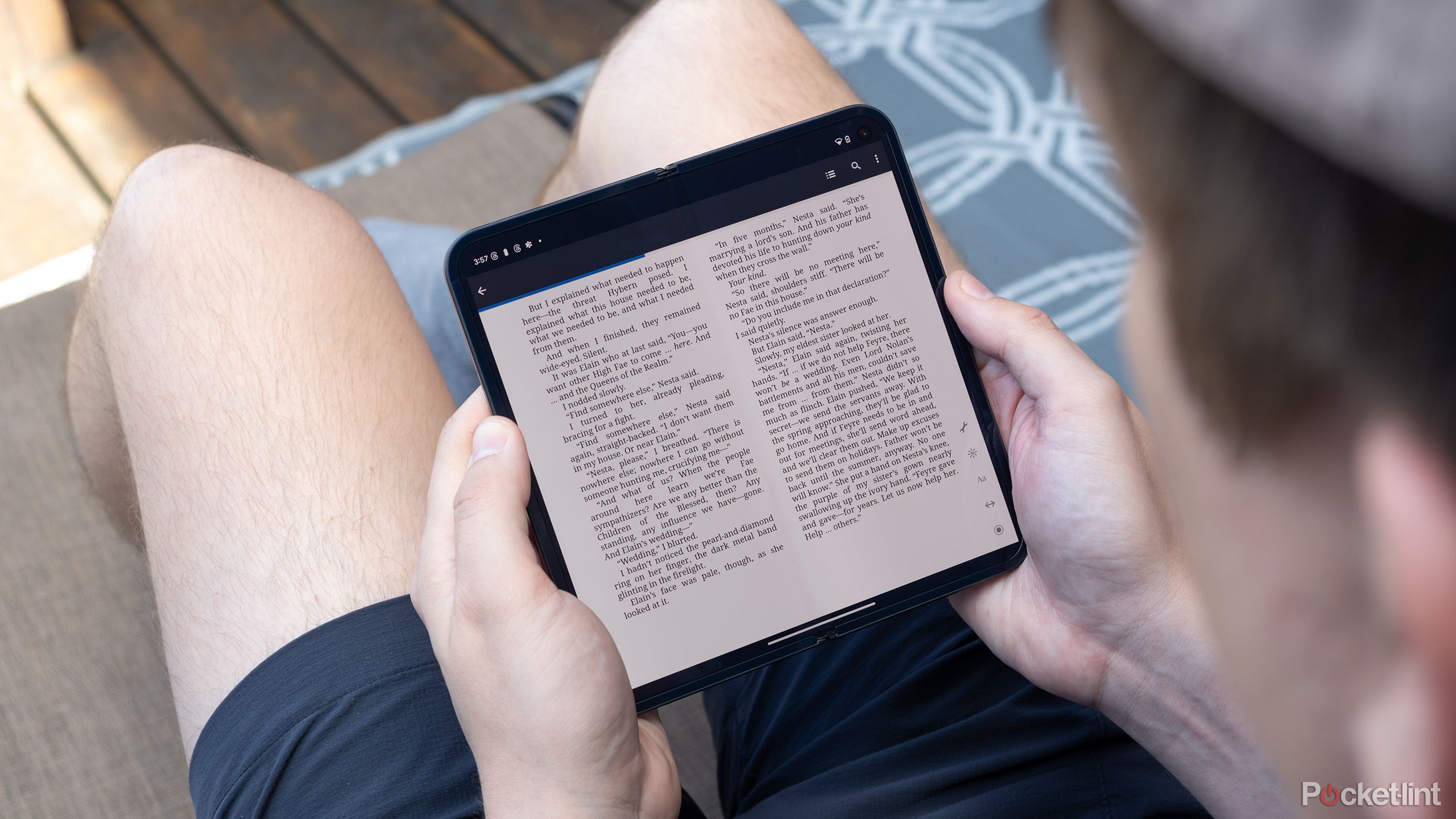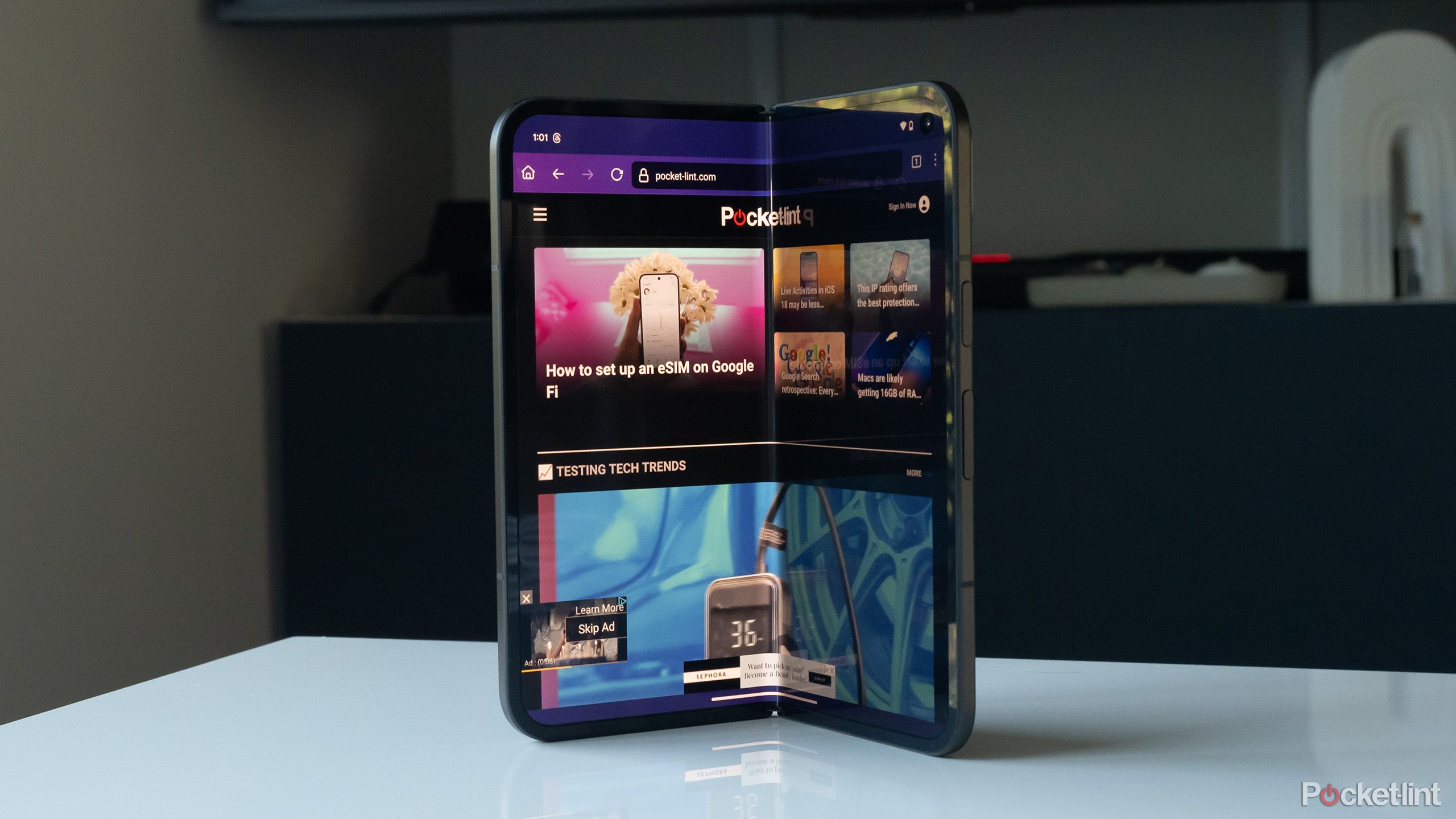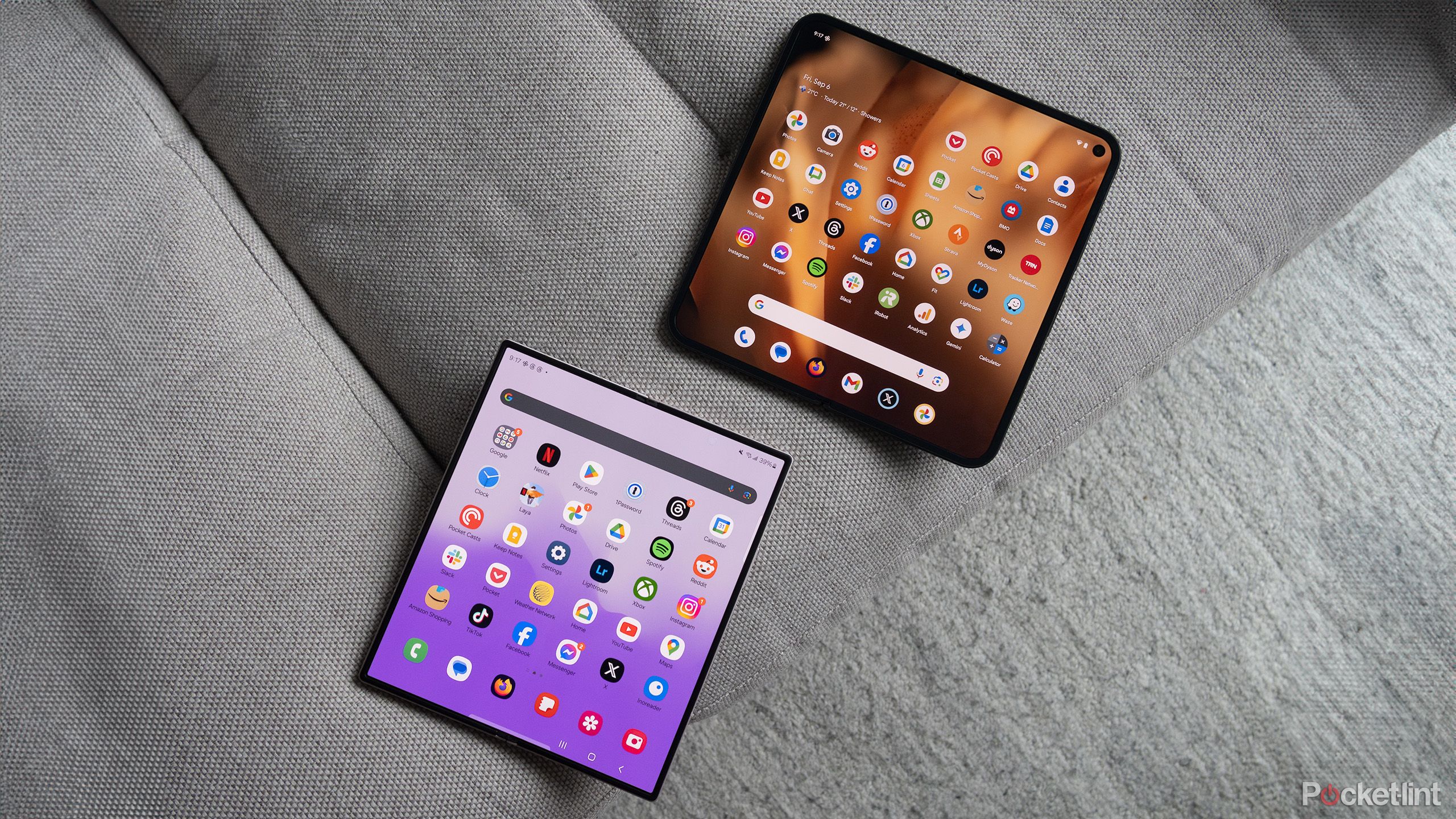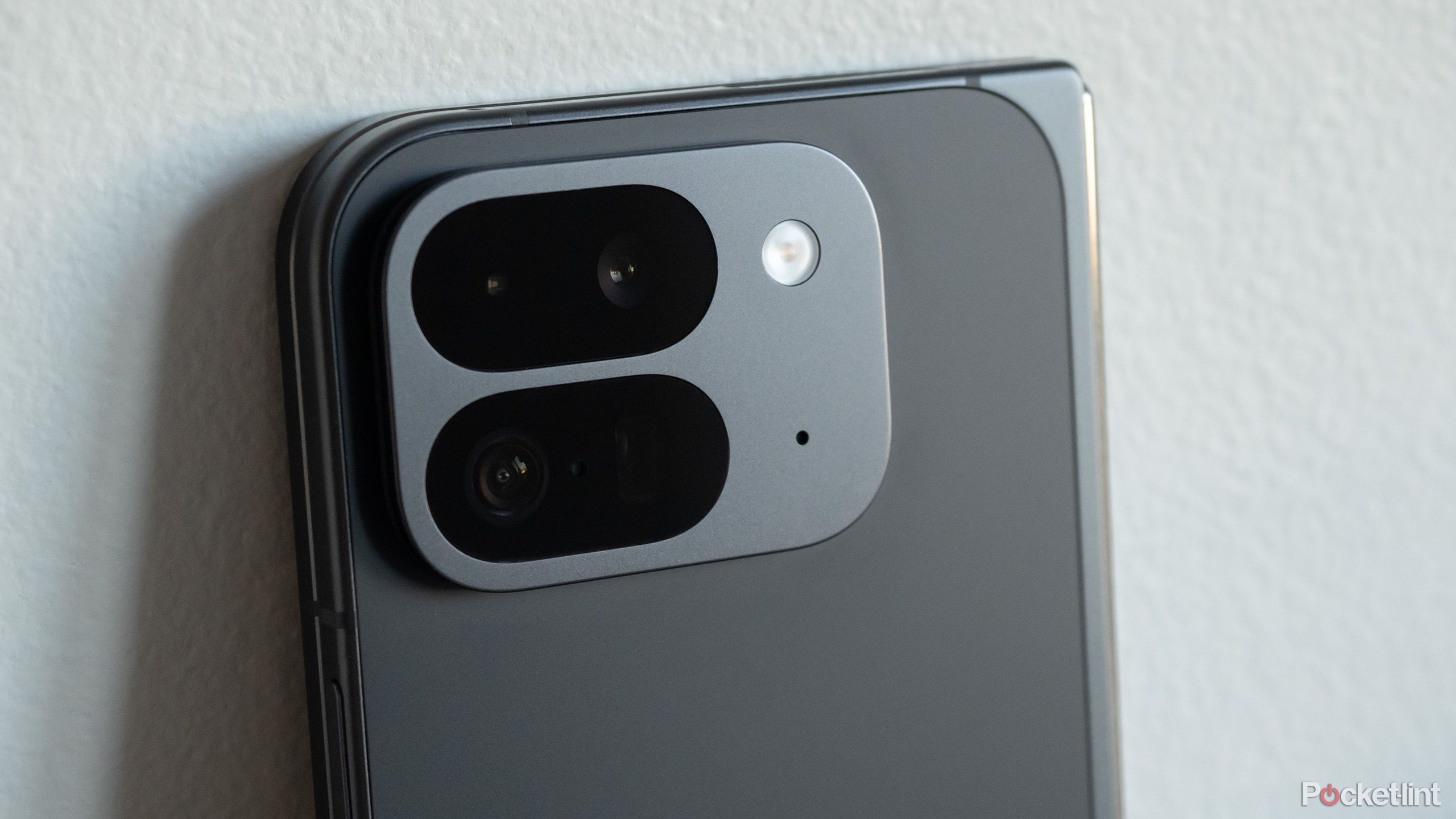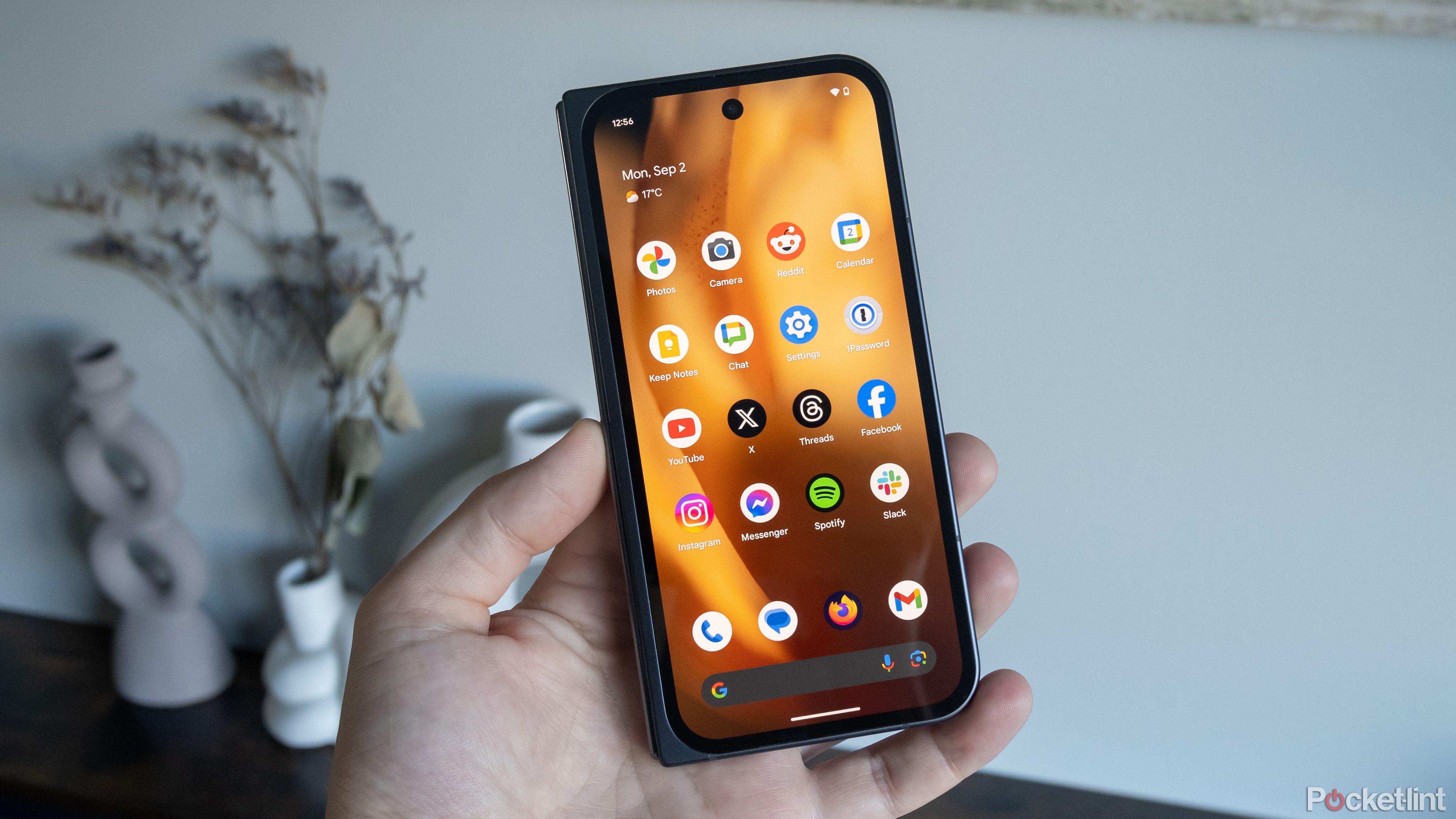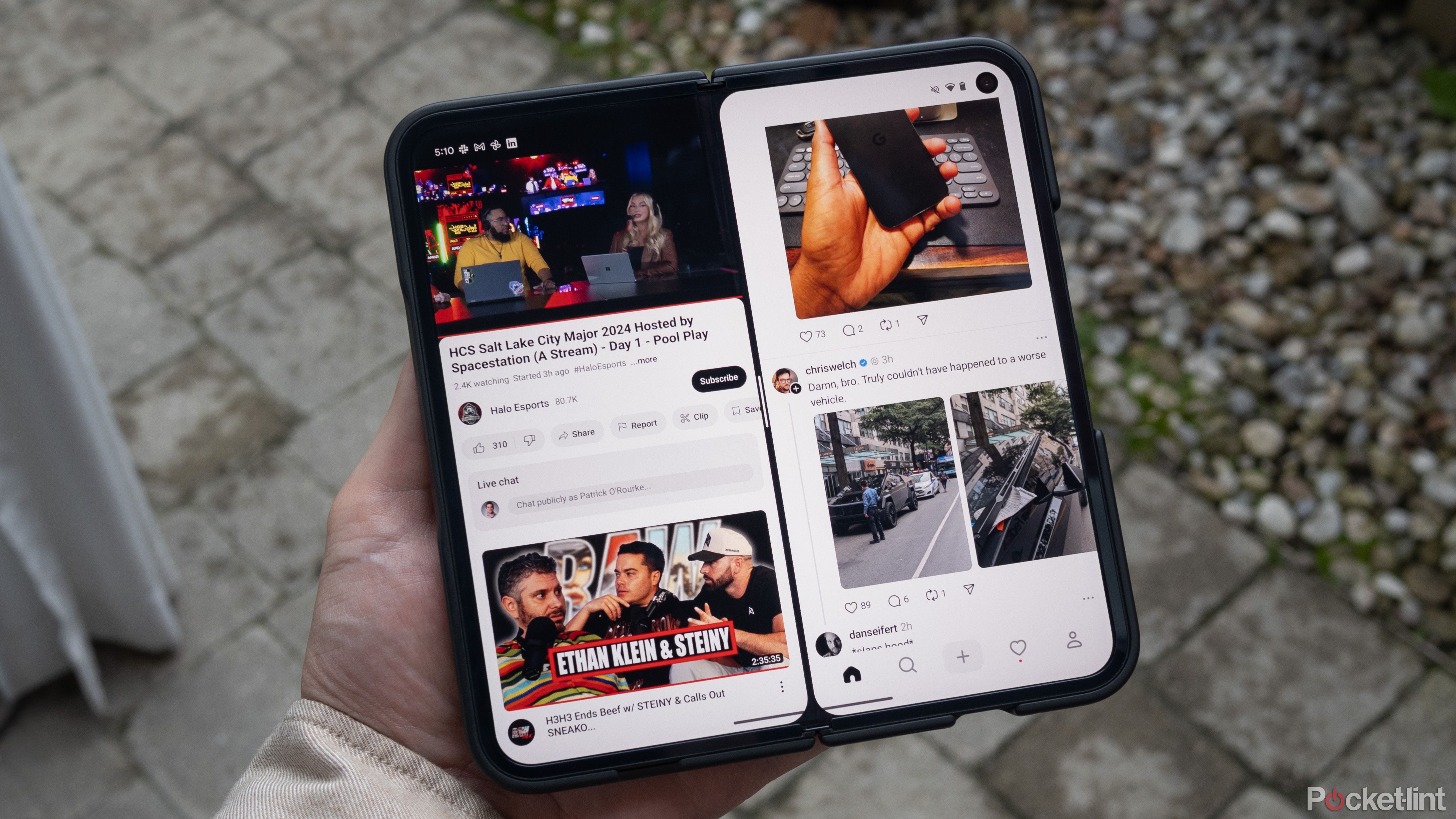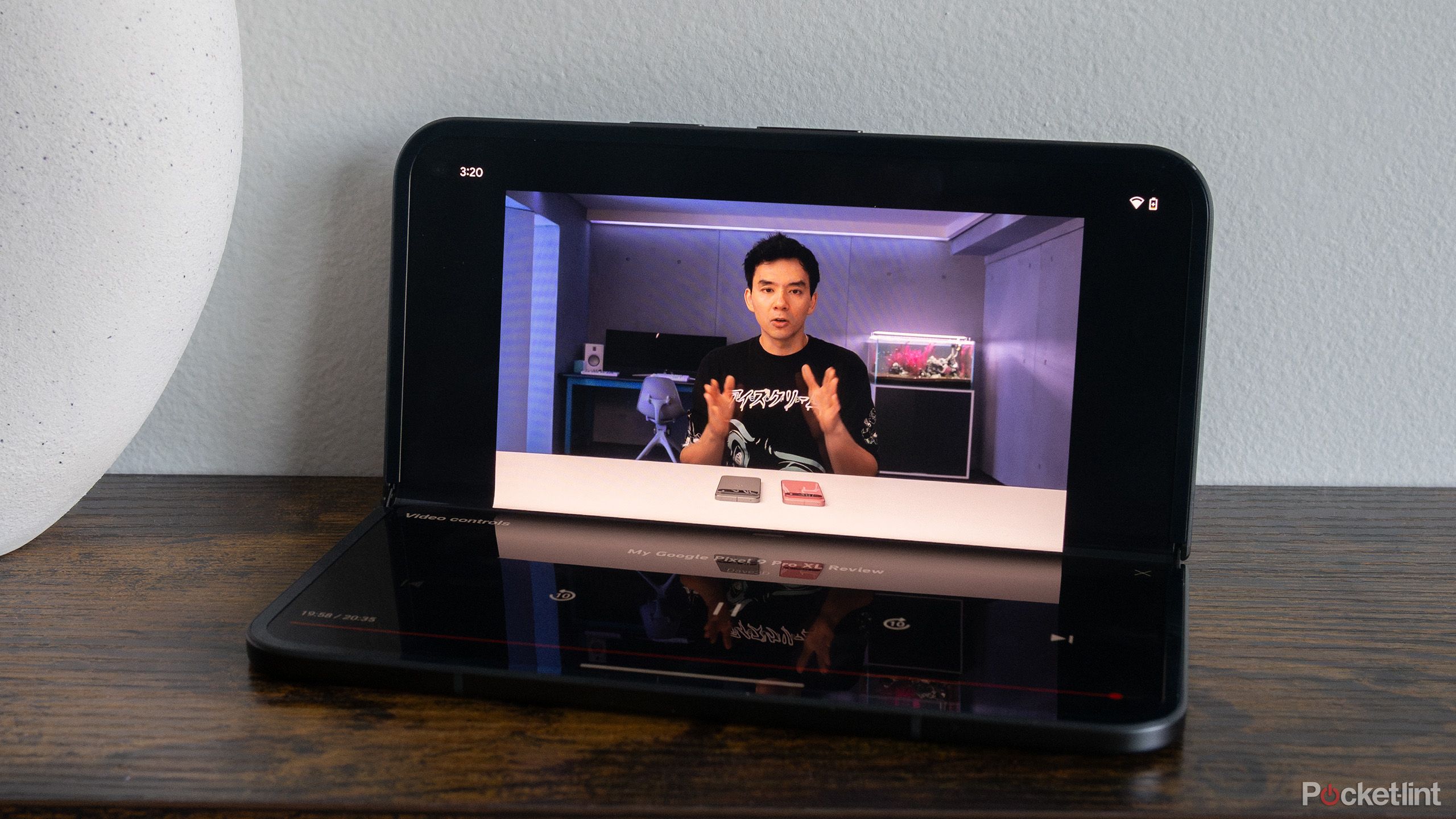Key Takeaways
- The Pixel 9 Pro Fold offers a wider cover display that makes it feel almost like a normal smartphone when it’s closed.
- Google’s 2nd gen Fold has a refined build with a squared-off hinge and solid over all feel, making it a standout from the competition.
- Despite a few software-related performance issues, the Pixel 9 Pro Fold delivers great photos and impressive AI features.
Book-style foldables just haven’t worked with the way I use a smartphone — until now.
Don’t get me wrong, I like the Galaxy Z Fold 6, the key competition for Google’s Pixel 9 Pro Fold in the North American market. It’s a solid-feeling smartphone, and this year, Samsung refined the foldable’s design in several meaningful ways. The device feels great when unfolded, but using its Cover Display remains a painfully cramped experience. Typing is annoying, browsing the internet with Firefox feels too confined, and, on top of that, the upper half of the device is oddly heavy, making it feel like the Galaxy Z Fold 6 could tumble out of my hand at any moment.
The oddly named Pixel 9 Pro Fold (just call it the Fold 2, Google) solves this problem with its wider cover display and impressively thin design. I wouldn’t go so far as to say it feels exactly like a normal smartphone when it’s not unfolded, but it’s far closer than I expected. This has transformed how I use the foldable, and for the first time, I feel like I can fit a book-style foldable smartphone in my life.
While I’ll spend some time discussing the Pixel 9 Pro Fold’s camera and AI features in this review, I take a much deeper dive into this functionality in my
Pixel 9
and
Pixel 9 Pro
series reviews.

Recommended
Pixel 9 Pro Fold
Google’s Pixel 9 Pro Fold aims to solve the original Pixel Fold’s key issues thanks to its thinner and lighter design, Tensor G4 chip and more fluid hinge.
- Wider cover display
- Refined, durable build
- Interior screen looks great
- Heavy, bulky design
- Camera lags behind Pixel 9 Pro
- Occasional software performance issues
Price, availability, and specs
Available now starting at $1,799
Google’s Pixel 9 Pro Fold is available starting at $1,799 in porcelain and obsidian, directly from Google and several other retailers. The foldable’s 6.3-inch, 60-120Hz OLED external display has a resolution of 1080 x 2424 pixels. Brightness reaches 1,800 nits for HDR, with peak brightness at 2,700 nits. The unfolded 8-inch, 1-120Hz internal ultra-thin glass screen, which Google calls its (LPTO) Super Actua Flex display, features a resolution of 2,076 x 2,152 pixels. Its brightness hits 1,600 nits for HDR and 2,700 nits at peak brightness.
Other specs include 16GB of RAM, either 256GB or 512GB of storage, and Google’s Tensor G4 chip. The rear triple-camera setup includes a main f/1.7 48-megapixel wide shooter, an f/2.2 10.5-megapixel ultra-wide camera, and an f/3.1 10.8-megapixel telephoto camera capable of up to 5x optical zoom. The front camera is an f/2.2 10-megapixel lens, and the inner camera is also an f/2.2 10-megapixel shooter.
When folded, the Pixel 9 Pro Fold is 10.5mm thick, and when unfolded, it’s a thin 5.1mm. The foldable smartphone weighs roughly 9oz (about 256g) and features a 4,650 mAh battery. It’s also IPX8 certified, meaning it can handle being submerged in 39 inches (roughly 1 meter) of water for up to 30 minutes. Since it’s a foldable, I wouldn’t recommend anyone actually test this, but it’s nice to know the very expensive smartphone won’t die if it accidentally gets a little wet.
Pixel 9 Pro XL build and design
Google’s new foldable offers a notable design upgrade over the original Pixel Fold
To say the Pixel 9 Pro Fold is nearly a complete redesign compared to the original Pixel Fold would almost be an understatement. During my roughly week-long experience with the device, it’s been, at times, difficult to comprehend just how far Google’s burgeoning foldable line has come in such a short period of time. With all of these changes, there’s a lot to unpack design-wise.
In a cool design twist, the hinge is completely squared, giving the Pixel 9 Pro Fold a unique design flair that helps it stand out from other smartphones.
First off, there’s now a rather sizable camera bump on the back that houses the rear camera array. I mentioned this in my Pixel 9 and Pixel 9 XL review, but I’m not fond of the new camera bump. It’s not a deal-breaker, but it looks like it was plopped onto the rear of the smartphone in a haphazard way. I much prefer the Pixel 8’s visor-like array or the center-set camera bump the original Pixel Fold offered.
Just like the Pixel 9 Pro line, the area surrounding the camera bump features a premium-feeling matte back that does a decent job of repelling grease and smudges. The edges of the device are squared off but also rounded, making it easier to grip when folded and unfolded. In a cool design twist, the hinge is completely squared, giving the Pixel 9 Pro Fold a unique design flair that helps it stand out from other smartphones.
Speaking of the hinge, it feels far more solid this year. That said, it’s not quite as fluid as the Z Fold 6’s hinge, and it makes an odd crackling noise, but it’s close. Thankfully, the new hinge design also allows the device to fold entirely flat without feeling like you’re pushing the foldable display past its limit, as with the original Fold.
The Pixel 9 Pro Fold’s bezels have been reduced both inside and outside the phone, and they look very similar to the Z Fold 6’s. If you put a case on Google’s foldable (and you probably should, given it’s a pricey phone), the bezels appear artificially expanded. This obviously isn’t the case, but it slightly cheapens the look of the Pixel 9 Pro Fold and is worth keeping in mind if you plan to use a case.
I can’t really imagine using the Pixel 9 Pro Fold, or any foldable smartphone, without a durable case.
Google sent me the official Pixel 9 Pro Fold case alongside the smartphone, and I’m impressed with it so far. I’m always nervous about dropping foldable smartphones, regardless of how durable they feel, and the case offers a bit of extra peace of mind. However, the part of the case that runs along the hinge and the cover screen’s bezels attaches with adhesive that will likely wear away over time (I also would have preferred the case to cover the entire hinge). Still, I can’t really imagine using the Pixel 9 Pro Fold, or any foldable smartphone, without a durable case.
Overall, the Pixel 9 Pro Fold’s hardware feels much more refined and durable than the original Fold, but it’s still a foldable. If you’re the type of person who drops their phone frequently, a folding smartphone probably isn’t for you.
Pixel 9 Pro Fold display
The foldable’s expansive 8-inch screen feels and looks great
First off, the Pixel 9 Pro Fold features the same 6.3-inch exterior display size as the Pixel 9 Pro, making it actually comfortable to use when folded. This means that when it’s folded, it looks and feels like a slightly thicker regular smartphone, unlike the original Pixel Fold, which had a shorter and slightly too-wide display that I found very awkward to hold with one hand during my brief time using it.
Along with the display size, the fact that it’s only 10.5mm thick, compared to the Galaxy Z Fold 6’s 12.1mm, contributes to making the Pixel 9 Pro Fold feel more like a regular smartphone when using its external screen. Looking at the Pixel 9 Pro Fold when it’s completely flat is really impressive and reminds me of seeing the super-thin M4 iPad Pro for the first time. Foldable screen technology has come a long way in a very short period, and that’s on display here with Google’s latest foldable.
For me, the missing link regarding book-style foldable smartphones is the usable cover screen. (Because I’m tired of scratching review devices, I quickly put a glass screen protector on it, which you can see in several photos in this review.) In my week with the foldable, I’ve primarily used the Pixel 9 Pro Fold like a regular smartphone. It’s only when I want to watch Netflix, YouTube, use the Kobo app to read a book, or read one of the countless articles I’ve saved in Pocket, that I open the foldable smartphone and use its expansive 8-inch screen. When it comes to reading or watching video content, the larger 8-inch screen is an absolute joy to use.
This gives me a relatively normal-feeling smartphone that can transform into a sprawling tablet when I want it to, and that’s kind of the dream, right? On a side note, I find myself using the exterior display or one half of the interior display when the Pixel 9 Pro Fold’s screen is open to watch content on YouTube while doing mindless tasks like washing the dishes or getting ready for bed. The propped-up display offers a great viewing experience, making it easier to passively glance at content when your attention is divided.
With all that raving positivity out of the way, the Pixel 9 Pro Fold’s folded experience isn’t perfect. First off, it’s rather heavy. This means using the foldable for long periods with one hand isn’t a great experience, and when it’s unfolded, the device can feel rather unwieldy due to its larger size. In fact, I actually prefer the Galaxy Z Fold 6’s 7.6-inch inner screen because it’s easier and more natural to hold in any orientation.
Still, I’d take the comfortable 20:9 front screen aspect ratio, given that’s how I use the Pixel 9 Pro Fold most of the time. It’s worth noting that you can still feel and see the fold in the screen when the smartphone is entirely flat. It’s probably just about as visible as the Galaxy Z Fold 6’s crease. I didn’t find it to be much of an issue, but if you were hoping the Pixel 9 Pro Fold would be the first device to eliminate the dreaded fold, you’ll be disappointed with Google’s second-generation foldable — it’s there, and you can still see it.
The display quality is crisp and clear, no matter what content you’re consuming, but the folding screen is unfortunately difficult to view under direct sunlight.
Similar to the Galaxy Z Fold 6, the Pixel 9 Pro Fold’s folding display feels like glass and doesn’t have the plasticky feel of earlier foldable smartphones. The display quality is crisp and clear, no matter what content you’re consuming, but the folding screen is unfortunately difficult to view under direct sunlight, despite its impressive 2,700 nits of peak brightness (which is actually 100 nits more than the Fold 6, though the screen looks dimmer when comparing both devices). I mostly used the foldable indoors during my time with it, but under direct sunlight, the folding screen can be pretty hard to see.
Pixel 9 Pro Fold camera
AI features and camera tools galore
I won’t dive too deeply into the Pixel 9 Pro Fold’s camera performance, but its camera capabilities lag behind the Pixel 9 Pro and Pixel 9 Pro XL. The main f/1.7 48-megapixel camera offers very similar quality, but the f/3.1 10.8-megapixel telephoto lens features a bigger aperture, despite still offering up to 5x optical zoom, leading to grainier photos in low light. The ultra-wide also measures in at f/2.2 10.5 megapixels, lagging behind the other devices in the Pixel 9 lineup and snapping photos that aren’t quite as sharp. The 10-megapixel f/2.2 selfie and interior camera also don’t compare to the impressive f/2.2 42-megapixel shooter the Pixel 9 Pro offers. In general, photos often tend to lack the contrast the Pixel 9 and Pixel 9 Pro series’ cameras offer.
With all of this in mind, does the Pixel 9 Pro Fold snap good photos? Yes, it definitely does, they just won’t be the best out there, and given the foldable’s cost, this is disappointing. On the other hand, this could be a trade-off worth making if you’re sold on the smartphone-tablet dream. If you’re interested in the Pixel 9 Pro Fold, you’re likely buying it because you want the ability to carry a tablet around in your pocket, rather than a photography powerhouse. Still, the decision not to offer the same camera array in the Pixel 9 Pro Fold as the Pixel 9 Pro is disappointing, given Samsung’s Galaxy Fold 6 features nearly the same shooters as the Galaxy S24 Ultra.
All of the key AI features are here, including the controversial “Reimagine,” which allows you to add nearly anything to pictures with prompts; Magic Eraser, which removes objects from images with a quick circle; Zoom Enhance for photos; Gemini/Gemini Live, and more. When it comes to AI-powered features, Google didn’t hold anything back from the Pixel 9 Pro Fold. “Made You Look,” which shows a cute animation on the external screen to get a kid’s attention when snapping a photo, isn’t something I’ll use very often, but I can see it coming in handy given how difficult it is to maintain a toddler’s focus. There’s also Dual Screen Preview, which displays a preview of the photograph you’re taking on the outer screen. Again, I likely won’t use this feature often, but I can see it being useful if you take photos of people frequently.
Pixel 9 Pro Fold performance
Decent battery life and benchmark performance
Performance has been decent during my roughly week-long experience with the Pixel 9 Pro Fold. I’ve encountered a few instances of slowdown and apps that have randomly crashed or lagged. Sometimes, apps also get stuck when transitioning between the cover screen and the main screen. I don’t think this is the fault of Google’s Tensor G4 chip, but rather an issue with the Pixel 9 Pro Fold’s software experience not being as smooth as the more mature foldable OS like One UI on the Galaxy Fold 6.
That said, the experience has been generally solid in terms of performance. Battery life isn’t mind-blowing, but I could get roughly a full day (until around 7 p.m.) before needing to top up. More intensive activities, like watching movies or playing games, tend to drain the battery a bit more quickly than my experience with the Pixel 9 or Pixel 9 Pro XL. I think this likely has to do with the fact that the external display doesn’t feature LTPO technology, meaning it can only go from 60-120Hz and not 1-120Hz like the Pixel 9 Pro line’s screen or the Pixel 9 Pro Fold’s internal display.
Regarding Geekbench 6 benchmarks, the Pixel 9 Pro Fold scores 2,969 for single-core and 4,777 for multi-core.
Pixel 9 Pro Fold software
App optimization and multitasking
Not every app takes full advantage of the Pixel 9 Pro Fold’s 8-inch unfolded display, but the phone is a vast improvement over the original Fold. It can still be frustrating at times, though. For example, some apps are oddly cut off on the interior screen. However, for the most part, the majority of apps look as you’d expect in landscape and portrait mode when the Pixel 9 Pro Fold’s screen is unfolded. Similar to Samsung’s foldables, all the key apps take full advantage of the larger 8-inch screen, including Gmail, Docs, Keep, YouTube, and more.
The experience of splitting two apps between both sides of the folding display is excellent and easy to do, thanks to the taskbar that appears when you swipe up from the bottom of the smartphone. You’re limited to just two apps, unlike the Galaxy Z Fold 6, but I haven’t found this to be an issue. I can’t think of a situation where I’d want more than two apps running at the same time on my phone.
The Pixel 9 Pro Fold’s sound lags behind other devices in the Pixel 9 lineup. It can get plenty loud, but it sounds hollow and easily distorts at higher volumes. In fact, I’m actually surprised at how lackluster it is compared to other high-end smartphones.
Should you buy the Google Pixel 9 Pro Fold?
There’s a lot to like about Google’s 2nd gen foldable
The Pixel 9 Pro Fold is extremely expensive at $1,799, but if I were in the market for a book-style foldable, I would pick it over the Galaxy Z Fold 6 because I appreciate its wider cover display, which allows me to use the device like a normal smartphone. This fulfills the dream of having a tiny tablet in my pocket at all times, and I prefer that over a slightly more comfortable-to-use internal folding screen. Still, there are compromises, including its hefty weight and camera specs that lag behind the top-tier Pixel 9 Pro series.
…If the idea of carrying both a smartphone and a sizable tablet around with you at all times is appealing, there’s a lot to like about Google’s Pixel 9 Pro Fold.
Does the Pixel 9 Pro Fold still snap excellent photos? Definitely. But they aren’t as good as what the Pixel 9 Pro and Pixel 9 Pro XL are capable of taking. However, if the idea of carrying both a smartphone and a sizable tablet around with you at all times is appealing, there’s a lot to like about Google’s Pixel 9 Pro Fold.
This device was provided to Pocket-lint by Google.
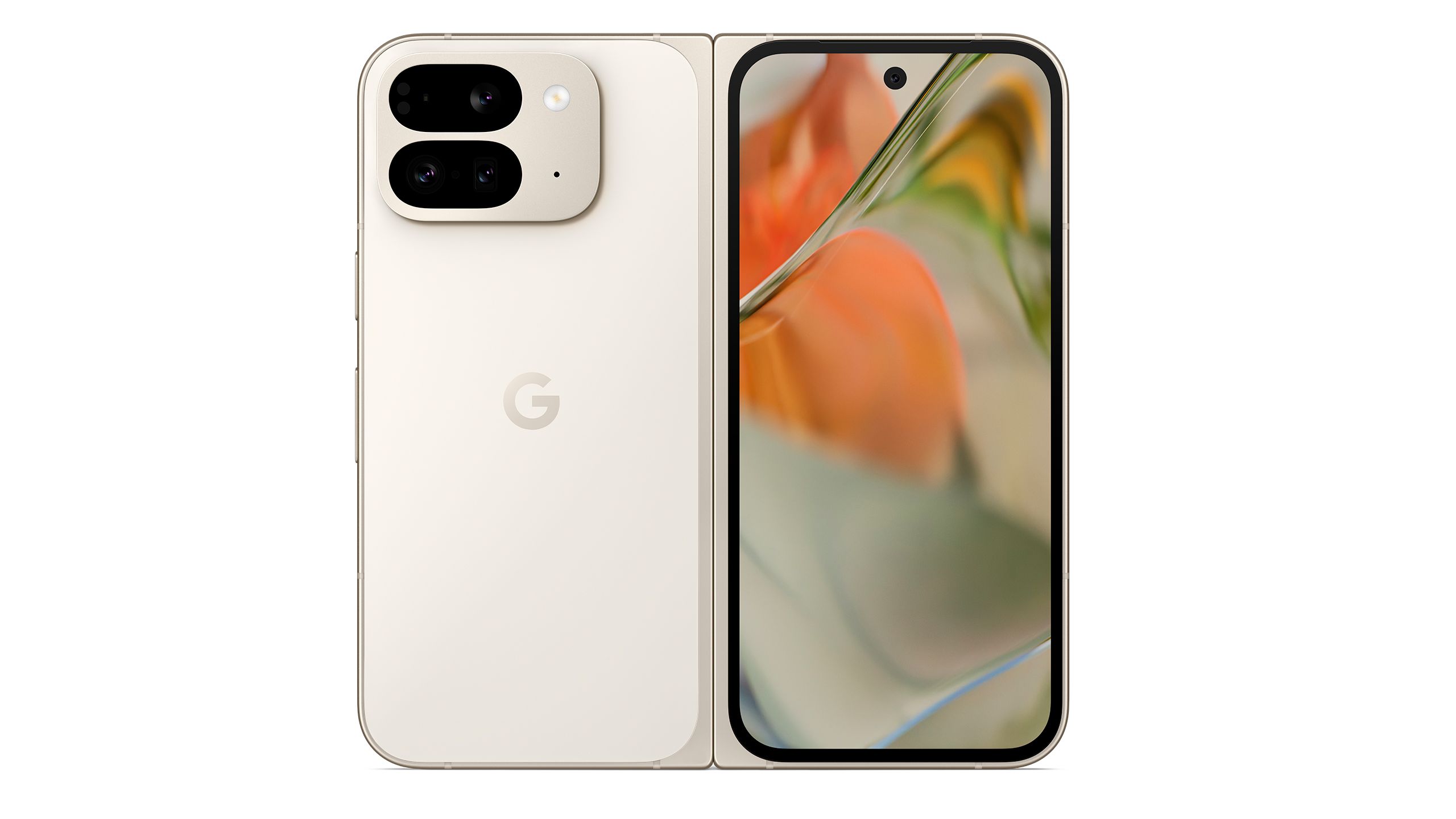

Recommended
Pixel 9 Pro Fold
Trending Products

Cooler Master MasterBox Q300L Micro-ATX Tower with Magnetic Design Dust Filter, Transparent Acrylic Side Panel, Adjustable I/O & Fully Ventilated Airflow, Black (MCB-Q300L-KANN-S00)

ASUS TUF Gaming GT301 ZAKU II Edition ATX mid-Tower Compact case with Tempered Glass Side Panel, Honeycomb Front Panel…

ASUS TUF Gaming GT501 Mid-Tower Computer Case for up to EATX Motherboards with USB 3.0 Front Panel Cases GT501/GRY/WITH Handle

be quiet! Pure Base 500DX ATX Mid Tower PC case | ARGB | 3 Pre-Installed Pure Wings 2 Fans | Tempered Glass Window | Black | BGW37

ASUS ROG Strix Helios GX601 White Edition RGB Mid-Tower Computer Case for ATX/EATX Motherboards with tempered glass, aluminum frame, GPU braces, 420mm radiator support and Aura Sync

CORSAIR 7000D AIRFLOW Full-Tower ATX PC Case â High-Airflow Front Panel â Spacious Interior â Easy Cable Management â 3x 140mm AirGuide Fans with PWM Repeater Included â Black


